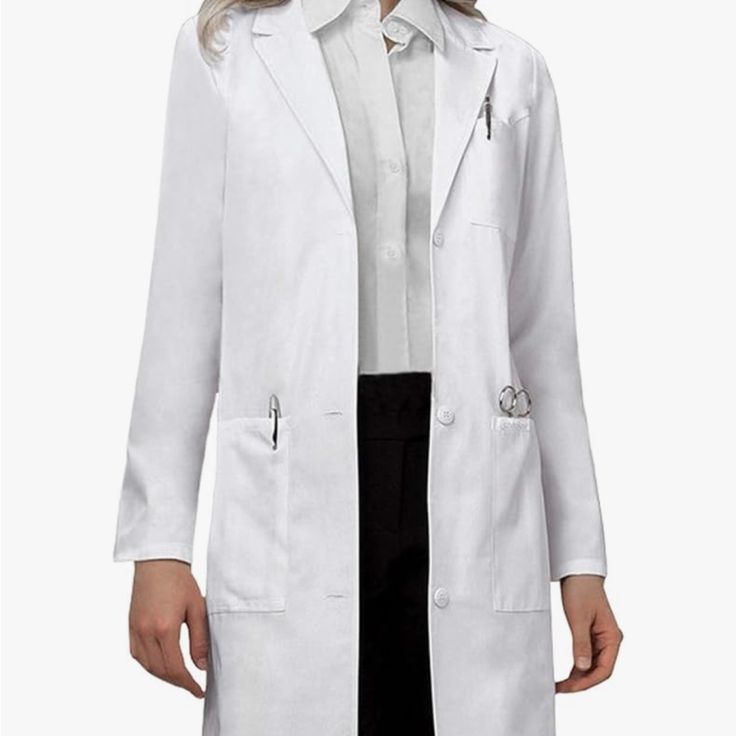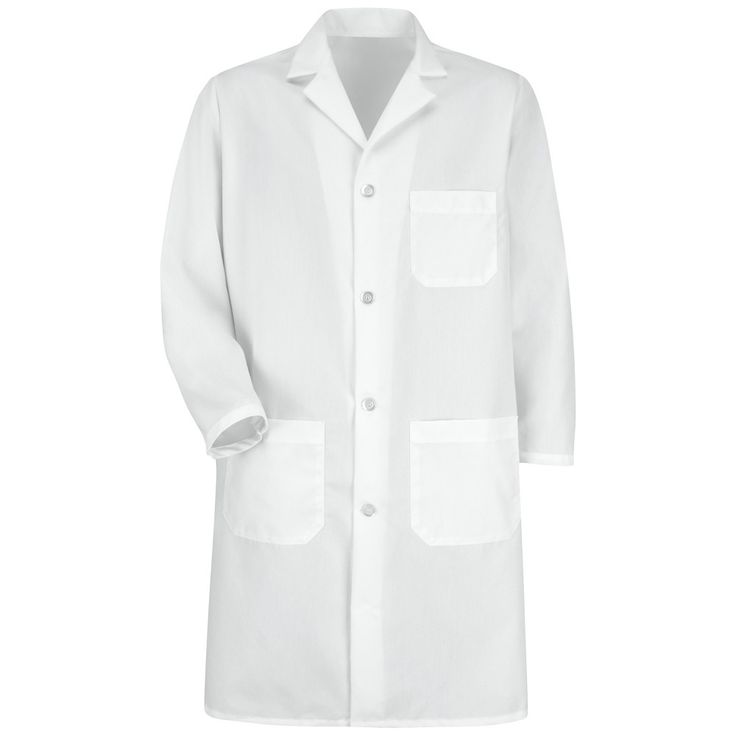The History and Significance of the White Coat
The white coat holds a special place in the medical profession. Its history goes back to the 19th century. Before that, doctors wore black coats. It was a symbol of formality and respect for the dead. However, in the late 1800s, medicine focused more on science. The white coat then emerged as a symbol of cleanliness and purity.
White coats became standard in the medical community by the early 20th century. They conveyed a scientific approach to healing and healthcare. This change also reflected improved understanding of infection control. White fabric made it easier to see dirt and contaminants. This was crucial for maintaining a sterile environment.
Today, white coats mean much more than just hygiene. They symbolize trust, knowledge, and authority. When patients see a doctor in a white coat, they often feel more confident about receiving quality care. Medical students typically receive their white coats in a ‘white coat ceremony.’ This event marks their entry into the medical profession. It reminds them of their commitment to the ethics and responsibilities of their field.
In essence, the white coat is not just apparel, but a garment imbued with the history and values of the medical profession. It reminds both doctors and patients of the primary goal of healthcare: to provide care and cure with the highest standards.

Essential Features to Consider When Choosing a Medical Coat
When selecting a white coat, several key features come into play. It’s important to ensure that your coat meets not only your individual needs but also the demands of your profession. This article outlines crucial elements to consider, guiding you toward an informed choice.
Material Quality
The fabric of your white coat plays a crucial role in its functionality and longevity. Opt for a blend of polyester and cotton, as this combination offers durability and comfort. Polyester provides resistance to wear and tear, while cotton enhances breathability. A good quality fabric withstands the rigors of daily use in a medical environment.
Comfort and Fit
Comfort is a priority when choosing a white coat. It should fit well without restricting your movement. Make sure there’s enough room to bend, stretch, and reach for tools. An ill-fitting coat can hinder your work, so it’s essential to find a style that provides both comfort and professional appearance.
Pockets and Storage
Ample pocket space is vital for carrying essential medical tools and personal items. Before making your purchase, check the number and size of the pockets. Look for coats with deep, secure pockets to keep your instruments handy and safe. This consideration ensures you can operate efficiently in a busy medical setting.
Length
The length of the coat can vary based on your role and personal preference. A longer coat offers more coverage and may convey a more professional appearance. However, a shorter coat can be more practical and comfortable when moving around in tight spaces. Choose the length that best suits your work environment.
Sleeves
Evaluate the sleeve length and cuff style. Different professionals have varying preferences. Some may prefer long sleeves for added protection, while others may find short sleeves easier for washing hands frequently. The sleeve style can impact your comfort and hygiene practices, so consider what works best for you.
Buttons and Fasteners
Pay attention to the buttons and fasteners on your coat. Ensure they are secure and easy to manage, especially when wearing gloves. Frustrations with fasteners can distract you during critical tasks, so opt for options that provide convenience and reliability.
Ease of Cleaning
A white coat must be easy to clean and maintain. Look for stain-resistant materials that can withstand spills and stains common in medical environments. Choosing a coat that is machine-washable simplifies the cleaning process. An easy-care coat saves you time and effort while keeping you looking sharp.
Color Retention
Over time, a white coat should maintain its bright appearance. High-quality fabric prevents yellowing after multiple washes. When selecting your coat, ensure it features color retention properties to uphold cleanliness and professionalism throughout its lifespan.
Remember to try on different styles and sizes before making your final choice. A white coat serves not merely as a uniform; it represents your profession and commitment to healthcare. Selecting the right coat is a decision that balances practicality with the pride inherent in the white coat tradition. Choosing wisely enhances your professional attire and contributes to how you are perceived in the medical field.

The Role of Fabric in Medical Coat Comfort and Functionality
When shopping for a white coat, the fabric is a critical element that impacts both comfort and functionality. Here are vital factors to consider related to the fabric of your white coat:
- Breathability: A breathable fabric is essential for comfort, especially during long shifts. It allows air circulation to help reduce overheating and sweat.
- Durability and Resistance: A white coat’s fabric should withstand frequent washing and daily wear. Fabrics with a blend of polyester and cotton are often chosen for their strength.
- Weight: The weight of the fabric can affect ease of movement. A too-heavy coat might be cumbersome, while a too-light coat might not provide enough warmth or protection.
- Texture: The fabric should feel comfortable against the skin. Rough textures can irritate, especially during long hours of wear.
- Flexibility: The fabric needs to be flexible to allow freedom of movement. Doctors often need to reach, bend, and perform various tasks while wearing the coat.
- Maintenance: Consider how the fabric holds up to stains and how easy it is to clean. Some fabrics offer stain-resistance, which is practical for a medical environment.
The right fabric enhances the performance of a white coat. It ensures that healthcare professionals can work efficiently without discomfort. When choosing your white coat, feel the fabric, try on different options, and consider how each one aligns with your daily tasks and the image you wish to project.
Decoding White Coat Styles: Lab Coat vs. Consultation Coat
When looking for a white coat, understanding the differences between a lab coat and a consultation coat is crucial. Here are key distinctions to consider:
- Purpose and Use: Lab coats are for laboratory work where spillage risk is high. Consultation coats are for meeting patients.
- Length and Design: Lab coats are generally longer for better protection against spills. Consultation coats tend to be shorter, allowing for easier movement.
- Material: Lab coats often have thicker material to guard against chemicals. Consultation coats might use lighter fabrics for comfort during consultations.
- Pockets and Accessories: Lab coats often have larger and more durable pockets to carry equipment. Consultation coats may have fewer, more streamlined pockets.
- Color Variations: While white is standard, lab coats might have color-coded elements for different lab sectors. Consultation coats usually remain plain white to maintain a formal look.
Choose the style that best fits your work environment and needs. Remember, a well-chosen white coat not only provides functionality but also upholds the professional image imperative in medical settings.

White Coats in Different Medical Fields: Specialized Requirements
When choosing a white coat, it’s crucial to consider the specific demands of your medical field. Each branch of healthcare may have unique needs that impact the choice of a white coat.
- Doctors and Surgeons: For those in the operating room, white coats need secure pockets for instruments. They should be easy to remove for sterility reasons.
- Laboratory Technicians: Lab techs require coats with resistance to chemicals. The fabric must protect against spills and possible corrosive substances.
- Pharmacists: Pharmacists often look for coats with comfortable fits and ample pockets. Coats need to be professional yet functional for a retail setting.
- Nurses: Nursing coats often have multiple pockets for nursing tools. They can be shorter for ease of movement during patient care.
- Dentists: Dentists prefer coats with shorter lengths. This allows for close patient interaction without the coat getting in the way.
- Veterinarians: Vets need durable coats that handle animal stains and odors. Fabrics should be robust and easy to clean.
- Specialists: Some medical specialists might require extra features. For example, radiologists might need protective elements integrated into their coats.
- Students: Medical students should choose coats that balance functionality and formality. This helps them adapt to different learning environments.
In every case, the white coat symbolizes a commitment to health care. It must also meet the practical demands of your specialty. When selecting your white coat, assess the unique aspects of your role in the healthcare field. Choose a coat that supports your tasks while upholding the dignity of your profession.
Maintenance and Care: Keeping Your Medical Coat Pristine
Keeping your white coat pristine is crucial for maintaining a professional appearance. Caring for your coat correctly also extends its life, helping you save money and reduce waste in the long run. Here are practical tips for maintaining and caring for your white coat:
- Regular Washing: Clean your coat after each use to remove stains and contaminants. Regular laundering prevents permanent discoloration and fabric damage.
- Stain Treatment: Address spills and stains immediately. Use a stain remover suitable for the fabric blend before washing. This helps keep the coat bright white.
- Gentle Cycle: Use a gentle wash cycle and mild detergent to protect the fabric’s integrity. Harsh chemicals can break down fibers and cause yellowing over time.
- White-only Laundry: Wash your white coat with other white garments. This prevents color transfer that can dull the crisp white appearance.
- Air Dry When Possible: Avoid high heat drying, which can shrink or damage the fabric. Air drying is gentler and helps retain the coat’s shape and size.
- Ironing: If necessary, iron on a low setting to avoid scorching the fabric. A well-ironed white coat looks crisp and professional.
- Immediate Storage: Hang your white coat up as soon as it’s dry. This prevents wrinkles and keeps it ready for your next shift.
By implementing these maintenance and care practices, your white coat will continue to serve as a symbol of cleanliness and professionalism for numerous years.

Sizing and Fit: Ensuring a Professional Look
Selecting the right size and fit for your white coat is essential. Here’s how to ensure you look professional and feel comfortable:
- Measure Your Body: Use a tape measure to find your accurate size. Measure your chest, waist, and hips for the best fit.
- Consider Your Work Activities: Choose a fit that allows for free movement. It should not be too tight or too loose during your work tasks.
- Look for Adjustable Features: Opt for coats with back belts or buttons. These can help adjust the coat to your body shape.
- Try Multiple Sizes: Sometimes the size chart may not match your body type. Try on different sizes to find the one that suits you best.
- Check the Length: Make sure the coat’s length is apt for your height. It should cover your torso while allowing for easy leg movement.
- Sleeve Length: Sleeves should end just above the wrists. This helps keep your hands free and maintains a tidy appearance.
- Shoulder Fit: The coat should sit comfortably on your shoulders. It should not pull or restrict when you reach out.
- Assess the Collar: A well-fitted collar lies flat and doesn’t gap. A good collar frames your face and enhances professionalism.
- Allow for Layering: If you wear scrubs or a sweater beneath, ensure there’s enough room. Your coat should not look bulky.
A well-fitting white coat boosts confidence and commands respect. It speaks to your meticulousness and professionalism in patient care.

Ethical Considerations and Sustainable Options in Medical Coat Production
Considering the ethical and sustainable aspects of white coat production is important. As a healthcare professional, showing concern for the environment reflects the compassion inherent in the industry. Here are some points to consider:
- Ethical Labor Practices: Choose manufacturers that adhere to fair labor standards. This means workers receive fair wages and work in safe conditions.
- Sustainable Materials: Opt for white coats made from organic cotton or recycled polyester. These materials have a lower environmental impact than traditional fabrics.
- Eco-friendly Production: Look for companies that use eco-friendly production methods. This includes using less water and energy and reducing chemical waste.
- Durability Over Disposable: Select a durable white coat that will last longer. This reduces waste, as it won’t need replacing as often as a disposable one.
- Recycling Programs: Some manufacturers offer recycling programs for old coats. This ensures the materials are reused and kept out of landfills.
- Transparency in Production: Companies that are transparent about their production process often follow ethical practices. This can include everything from the sourcing of materials to the treatment of employees.
By choosing ethically made and sustainable white coats, healthcare professionals can uphold both personal and industry-wide ethical standards. This choice not only benefits the environment but also supports equitable and humane work environments globally.

